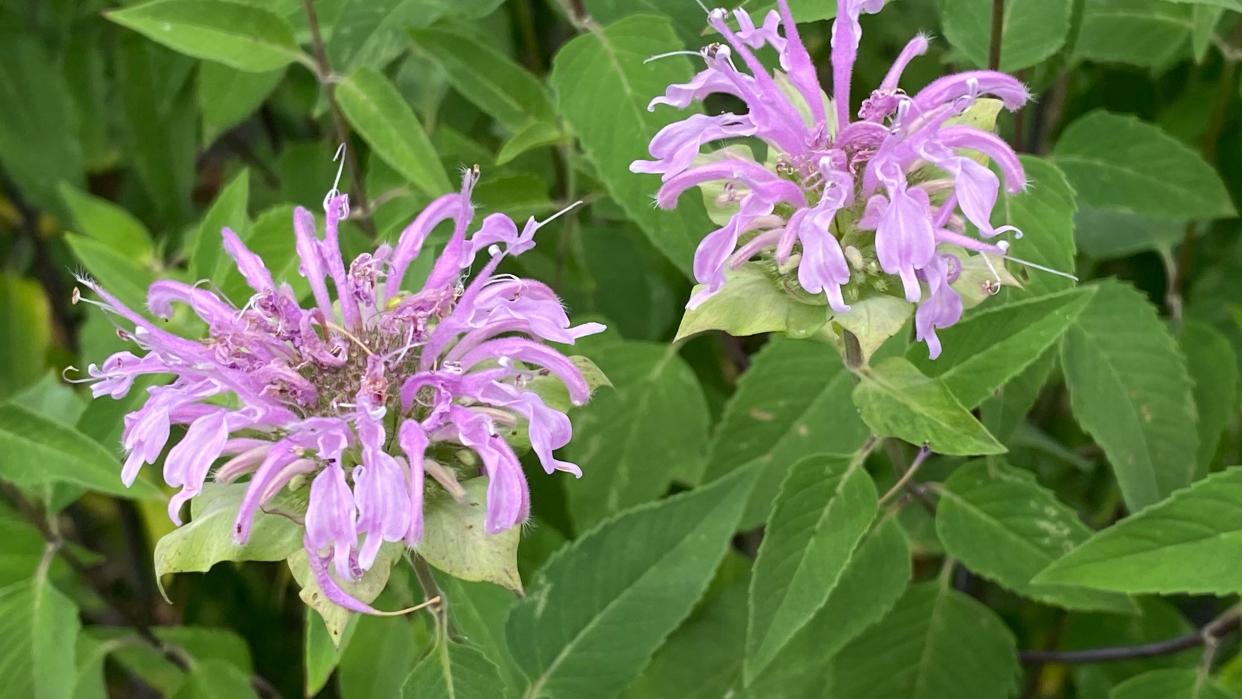Native Plant: Wild bergamot's kinship to mint makes it ideal for cooking, medicinal uses

Editor's note: Once a month, the OSU Extension master gardener's office of Franklin County profiles a plant that occurs naturally in central Ohio.
Wild bergamot, or Monarda fistulosa, though not your Earl Grey tea flavor of bergamot, is a plant that has historically been used for medicinal and cooking purposes.
A member of the mint family, its essential oils and leaves have been used to relieve headaches and cold symptoms, soothe babies, cure stomach aches, treat burns, and as a flavoring for food and beverages.
The plant was named for 16th-century botanist Nicolas Monardes. M. fistulosa, refers to the tubular petals of the flowers whose colors vary from pale to deep pink or rosy lavender. The blooms that are set on a whorl of pink to red-tinted bracts have been described as “ragged pompoms.” Blooms typically appear between May and September. Foliage is grayish-green to dark green with lance-shaped leaves.
Wild bergamot is a clump-forming herbaceous perennial that reaches from 2 to 4 feet in height with a 2- to 3-foot spread.
Nature: Baltimore checkerspot butterfly sighting a rare and joyous occasion
With a range from Canada to Mexico, it is found in all U.S. states except Alaska, California and Florida, and can be seen in open woods, prairies, fields, roadsides and along railroads. In the garden, it can be used like the more familiar M. didyma or bee balm, but has a wider-growing range. Its showy flowers make it an excellent addition to herb gardens, naturalized areas, rain gardens and informal borders.
M. fistulosa’s long bloom period provides abundant resources for a number of specialist bees, bumble bees, predatory wasps and hummingbirds. It is a host plant for the sphinx moth, an important pollinator of prairies, and is also a valuable source of nectar for monarch butterflies. Deer and rabbits avoid this plant, primarily due to its strong scent and flavor. It is also tolerant of black walnut.
Native plant: Rosa arkansana yields vitamin C-rich rose hips and food for insects, animals
This plant spreads primarily by reseeding and can easily be started from seed. It grows from a rhizomatous root system that enlarges its clump each year, so it is recommended to lift and divide every three years to contain it, improve air circulation and improve plant vigor. Stem cuttings can be rooted during the growing season.
Growing requirements
Hardiness zones: 3b-9b
Sun: full sun to partial shade
Water: moist to somewhat dry
Soil: well-drained loam, sand or clay, but will tolerate poor soils
Propagation: seed, divisions, stem cuttings
Pests and diseases: Powdery mildew can be a problem with all Monarda, but fistulosa shows resistance. Prune stems to increase air flow to reduce the incidence of mildew.
This article originally appeared on The Columbus Dispatch: Wild bergamot historically used for medicinal and cooking purposes

